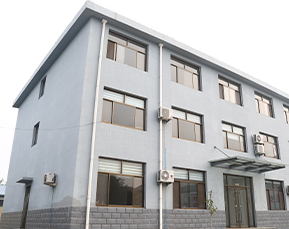 Afrikaans
Afrikaans  Albanian
Albanian  Amharic
Amharic  Arabic
Arabic  Armenian
Armenian  Azerbaijani
Azerbaijani  Basque
Basque  Belarusian
Belarusian  Bengali
Bengali  Bosnian
Bosnian  Bulgarian
Bulgarian  Catalan
Catalan  Cebuano
Cebuano  Corsican
Corsican  Croatian
Croatian  Czech
Czech  Danish
Danish  Dutch
Dutch  English
English  Esperanto
Esperanto  Estonian
Estonian  Finnish
Finnish  French
French  Frisian
Frisian  Galician
Galician  Georgian
Georgian  German
German  Greek
Greek  Gujarati
Gujarati  Haitian Creole
Haitian Creole  hausa
hausa  hawaiian
hawaiian  Hebrew
Hebrew  Hindi
Hindi  Miao
Miao  Hungarian
Hungarian  Icelandic
Icelandic  igbo
igbo  Indonesian
Indonesian  irish
irish  Italian
Italian  Japanese
Japanese  Javanese
Javanese  Kannada
Kannada  kazakh
kazakh  Khmer
Khmer  Rwandese
Rwandese  Korean
Korean  Kurdish
Kurdish  Kyrgyz
Kyrgyz  Lao
Lao  Latin
Latin  Latvian
Latvian  Lithuanian
Lithuanian  Luxembourgish
Luxembourgish  Macedonian
Macedonian  Malgashi
Malgashi  Malay
Malay  Malayalam
Malayalam  Maltese
Maltese  Maori
Maori  Marathi
Marathi  Mongolian
Mongolian  Myanmar
Myanmar  Nepali
Nepali  Norwegian
Norwegian  Norwegian
Norwegian  Occitan
Occitan  Pashto
Pashto  Persian
Persian  Polish
Polish  Portuguese
Portuguese  Punjabi
Punjabi  Romanian
Romanian  Russian
Russian  Samoan
Samoan  Scottish Gaelic
Scottish Gaelic  Serbian
Serbian  Sesotho
Sesotho  Shona
Shona  Sindhi
Sindhi  Sinhala
Sinhala  Slovak
Slovak  Slovenian
Slovenian  Somali
Somali  Spanish
Spanish  Sundanese
Sundanese  Swahili
Swahili  Swedish
Swedish  Tagalog
Tagalog  Tajik
Tajik  Tamil
Tamil  Tatar
Tatar  Telugu
Telugu  Thai
Thai  Turkish
Turkish  Turkmen
Turkmen  Ukrainian
Ukrainian  Urdu
Urdu  Uighur
Uighur  Uzbek
Uzbek  Vietnamese
Vietnamese  Welsh
Welsh  Bantu
Bantu  Yiddish
Yiddish  Yoruba
Yoruba  Zulu
Zulu conveyor system parts
Understanding Conveyor System Parts An Essential Guide
Conveyor systems are integral components in many industries, revolutionizing the way goods are transported within manufacturing plants, warehouses, and distribution centers. These systems streamline operations, improve efficiency, and reduce the physical strain on workers. At the heart of every conveyor system are its components, each playing a crucial role in ensuring smooth and effective material handling. This article delves into the key parts of conveyor systems, their functions, and their significance.
1. Belt
The conveyor belt is perhaps the most recognizable component of a conveyor system. It is responsible for transporting materials from one point to another. Conveyor belts come in various materials, including rubber, fabric, and metal, each suited for different applications. The choice of belt material depends on factors such as the weight of the load, the temperature of the environment, and the type of materials being conveyed. Additionally, belts can be modular, which allows for easy replacement of damaged sections without disrupting the entire system.
Rollers and idlers support the conveyor belt and facilitate its movement. Rollers are installed at various points along the conveyor line to reduce friction, allowing the belt to glide smoothly. They come in various types, including drive rollers, return rollers, and carry rollers, each serving specific functions. Idlers, on the other hand, maintain the belt's tension and alignment, which is vital for the system's efficiency and longevity.
3. Drive Unit
The drive unit is the powerhouse of the conveyor system. Typically consisting of a motor, gearbox, and drive rollers, it generates the necessary force to move the conveyor belt. The motor can be an electric, hydraulic, or pneumatic system, depending on the application requirements. It's vital to select a drive unit that matches the load capacity and speed of the conveyor, ensuring optimal performance.
conveyor system parts

4. Frame
The conveyor frame provides structural support for the entire system. Made from various materials such as steel, aluminum, or plastic, the frame must be robust enough to withstand the operational environment and the weight of the materials being transported. Additionally, the design of the frame can impact maintenance access and adjustability, which are important for long-term operational efficiency.
5. Safety Devices
Safety is paramount in any industrial operation, and conveyor systems are no exception. Various safety devices are integrated into these systems to protect workers and equipment. Emergency stop buttons, safety guards, and sensors help prevent accidents and ensure that the system operates within safe parameters. Regular maintenance and inspection of these safety devices are essential to uphold workplace safety standards.
6. Controls and Automation
Modern conveyor systems frequently incorporate controls and automation technologies to enhance functionality. These can include programmable logic controllers (PLCs), sensors, and automated sorting systems. By automating the conveyor process, businesses can achieve greater accuracy, reduce manual interventions, and streamline operations, ultimately leading to improved productivity and cost savings.
Conclusion
Understanding the various parts of conveyor systems is essential for anyone involved in material handling or industrial operations. From the fundamental conveyor belt to the intricate control systems, each component plays a vital role in ensuring that materials are transported efficiently and safely. As industries continue to evolve and demand higher efficiency, the importance of conveyor systems—and their components—will only grow. Regular maintenance and updates to these systems can significantly enhance operational efficiency and extend service life, making them a valuable investment in any industrial setting.
-
Revolutionizing Conveyor Reliability with Advanced Rubber Lagging PulleysNewsJul.22,2025
-
Powering Precision and Durability with Expert Manufacturers of Conveyor ComponentsNewsJul.22,2025
-
Optimizing Conveyor Systems with Advanced Conveyor AccessoriesNewsJul.22,2025
-
Maximize Conveyor Efficiency with Quality Conveyor Idler PulleysNewsJul.22,2025
-
Future-Proof Your Conveyor System with High-Performance Polyurethane RollerNewsJul.22,2025
-
Driving Efficiency Forward with Quality Idlers and RollersNewsJul.22,2025





























